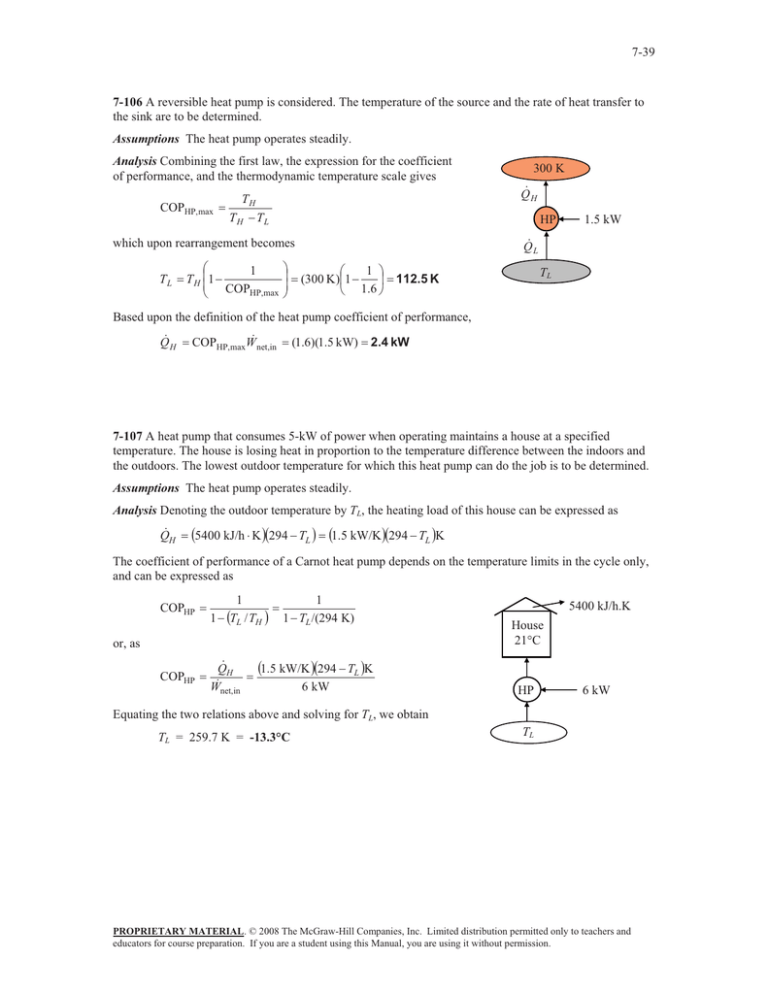7-39 the sink are to be determined. 300 K
advertisement

7-39 7-106 A reversible heat pump is considered. The temperature of the source and the rate of heat transfer to the sink are to be determined. Assumptions The heat pump operates steadily. Analysis Combining the first law, the expression for the coefficient of performance, and the thermodynamic temperature scale gives COPHP, max TH TH TL § 1 T H ¨1 ¨ COPHP,max © Q H HP · ¸ ¸ ¹ 1.5 kW Q L which upon rearrangement becomes TL 300 K 1 · § (300 K )¨1 ¸ 112.5 K © 1.6 ¹ TL Based upon the definition of the heat pump coefficient of performance, Q H COPHP, maxW net,in (1.6)(1.5 kW) 2.4 kW 7-107 A heat pump that consumes 5-kW of power when operating maintains a house at a specified temperature. The house is losing heat in proportion to the temperature difference between the indoors and the outdoors. The lowest outdoor temperature for which this heat pump can do the job is to be determined. Assumptions The heat pump operates steadily. Analysis Denoting the outdoor temperature by TL, the heating load of this house can be expressed as Q H 5400 kJ/h K 294 TL 1.5 kW/K294 TL K The coefficient of performance of a Carnot heat pump depends on the temperature limits in the cycle only, and can be expressed as COPHP 1 1 TL / TH 1 1 TL /(294 K) or, as COPHP Q H Wnet,in 5400 kJ/h.K House 21qC 1.5 kW/K 294 TL K 6 kW HP 6 kW Equating the two relations above and solving for TL, we obtain TL = 259.7 K = -13.3°C TL PROPRIETARY MATERIAL. © 2008 The McGraw-Hill Companies, Inc. Limited distribution permitted only to teachers and educators for course preparation. If you are a student using this Manual, you are using it without permission.

